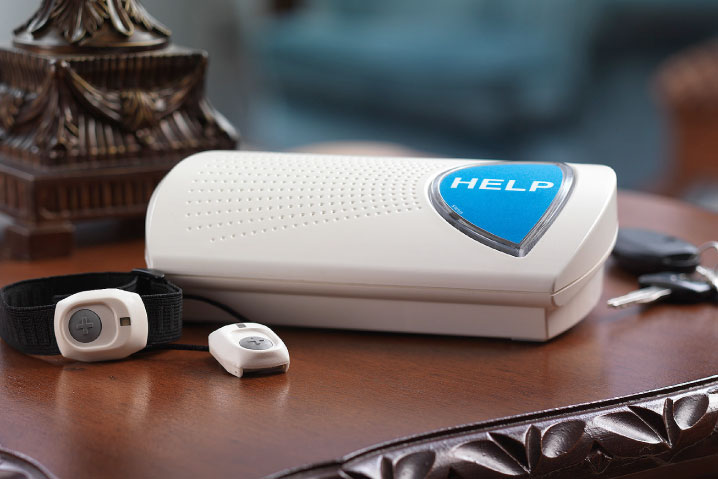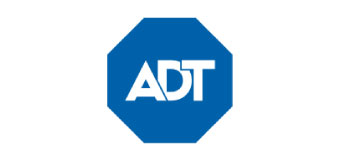Best Medical Landline Systems of 2025
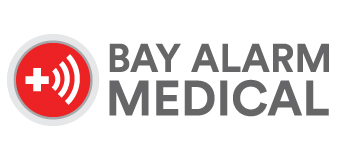
9.8
- Most Popular Choice Among Readers
- Plans from $24.95/mo
- Ultra-fast response times of under 12 seconds
- Ranked #1 for best customer service
- No hidden costs or activation fees
- Free Shipping + Free Month on Select Plans
- Full suite of in-home, mobile, and smartwatch devices
Bottom Line
With pricing plans that fit any budget and over 70 years of proven life-saving dispatches, Bay Alarm Medical is a premiere medical alert provider that you can trust and rely on.

9.1
- Competitive pricing
- Plans from $27.95/mo
- Reliable and easy-to-use equipment
- Recommended by leading hospitals and caregivers
- No long term contracts
Bottom Line
Medical Alert delivers trustworthy and dependable 24/7 medical monitoring. Get a free month and free shipping when you sign up for an annual plan.

9.0
- Trusted brand name with 40 years experience
- Pioneers of Auto Fall Detection
- One Year Warranty on Mobile GPS Device
- Professional Installation Available
Bottom Line
If you’re looking for a trusted medical alert system and willing to pay a little extra for a known brand in healthcare, look no further than Lifeline.
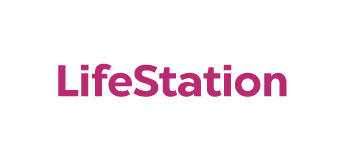
9.0
- 30-day money back guarantee
- Award-Winning In-House Monitoring
- Smartwatch features include Heart Rate Monitor and more
Bottom Line
For decades, LifeStation has delivered trustworthy, 24/7 medical monitoring. The starting price is affordable and their service has been proven to be dependable and reliable.
Between 2012 and 2022, the percentage of American adults using landline phones fell from more than 60% to just 28.7%, significantly reducing the market for landline-based medical alert systems. However, these systems are still essential in regions with poor or nonexistent cell service. Landline medical alert systems provide a crucial safety net in rural, mountainous, or sparsely populated areas during emergencies. The American College of Emergency Physicians recommends personal emergency response systems for older adults, particularly those living alone. It’s encouraging to see that many top providers still offer landline-compatible systems, delivering reliable service at affordable rates.
Our team evaluated landline-based medical alert systems from four companies: Bay Alarm Medical, Medical Guardian, Medical Alert, and Lifeline. We assessed each system based on user-friendliness, cost, reliability, customer support, and other factors to identify the best in-home landline medical alert option.
How We Tested: Hands-On Testing + In-Depth Reviews
Our team dedicated 12,000 hours to researching 16 top medical alert brands to identify the best systems. After that, we spent more than 520 hours testing them firsthand. We secret-shopped each provider, purchased each system, and carefully assessed every stage of the experience: from buying and setup to real-world scenarios, countless button pushes, and testing auto fall detection,
We paid close attention to both the technical performance of the systems and the level of customer service provided by the companies. During consultations, we noted which brands offered honest assessments versus those focused on maximizing our monthly subscription costs. We also flagged companies with aggressive sales tactics, startup costs, restocking fees, and hard-to-manage return policies. While simulating falls, we evaluated how emergency operators responded and followed up with us.
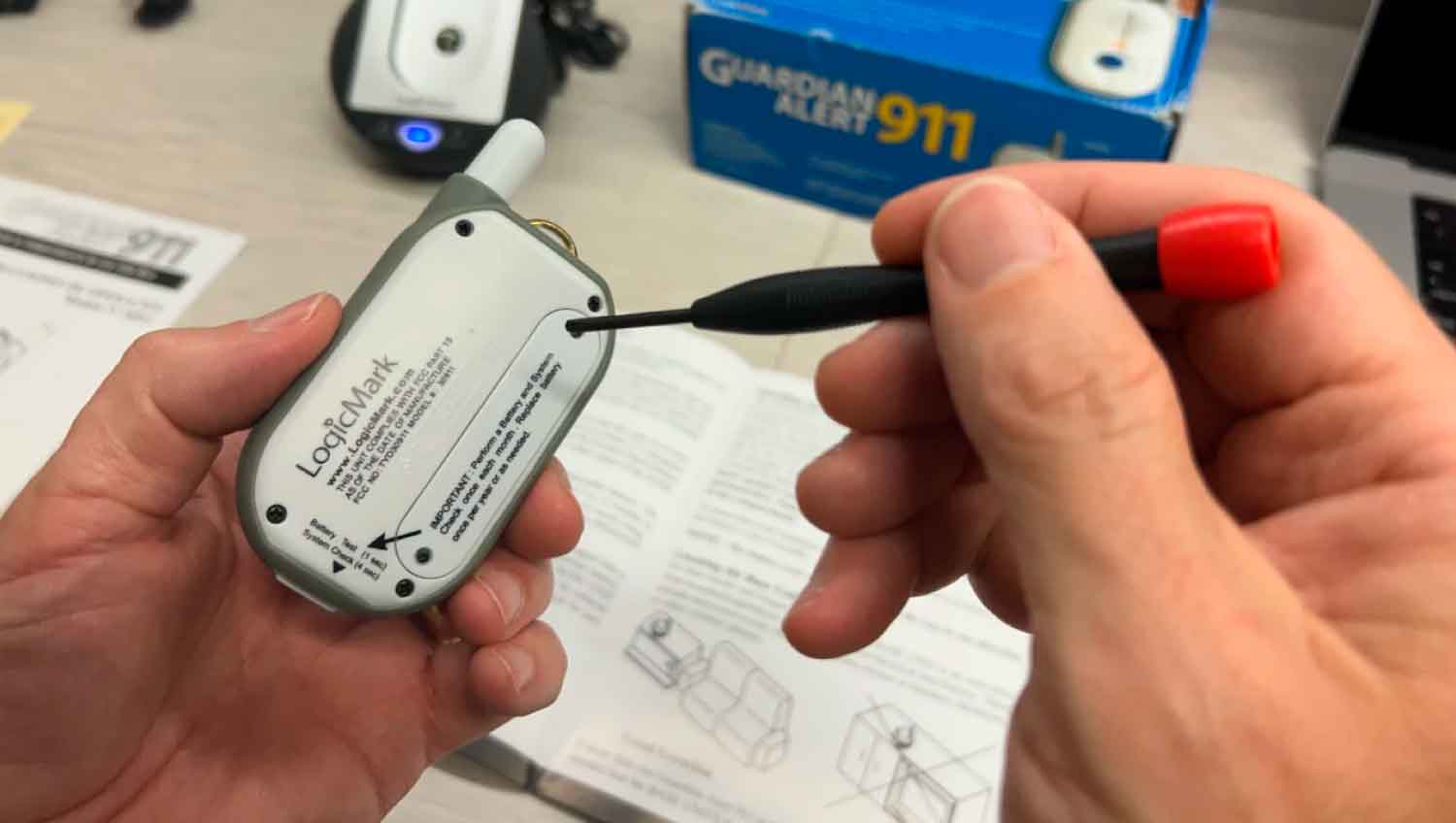
The Best In-Home Medical Alert Landline Systems of 2025
- Bay Alarm Medical SOS Home Landline System Review - Best Customer & Pricing
- ConnectAmerica MedicalAlert.com Home System Review - Best for Ease of Use & Setup
- Lifeline HomeSafe AutoAlert System (Landline) Product Review -
- LifeStation Review - Best for In-House Monitoring
- ADT Medical Alert Review - Best for Brand Reputation
Bay Alarm Medical SOS Home Landline System Review Overview
The Bay Alarm Medical SOS Home Landline system is a reliable and easy-to-use medical alert solution designed specifically for seniors who prefer a simple, home-based setup through their existing landline. Praised for its affordability, quick response times, and straightforward operation, it’s an excellent choice for those who want dependable protection without the need for cellular or GPS features.
Named our 2025 Editor’s Choice for Best Home Landline Medical Alert System, the SOS Home Landline offers a seamless experience from start to finish. Bay Alarm Medical provides clear instructions, user manuals, and helpful videos to guide users through setup, which can be completed in under five minutes. The checkout process is equally streamlined: the device is pre-registered, so when you conduct your first test call, your details are already on file—no lengthy activation process required.
During testing, setup and unboxing took just five minutes. We successfully maintained a strong connection up to 1,000 feet from the base unit, and the help button connected to the monitoring center in about 40 seconds, ensuring rapid assistance when needed.
An optional fall detection pendant adds an extra layer of safety, particularly for seniors living alone. This pendant effectively distinguishes between normal movements and actual falls, minimizing false alarms. Meanwhile, the primary help button offers flexible wear options—either as a pendant or wristband—to suit individual preferences.
When compared to Medical Guardian’s Classic Guardian system, the SOS Home Landline holds its own. While Medical Guardian offers more customization, their basic service is more expensive, and additional features quickly add to the cost.
With its combination of strong performance, simplicity, and affordability, the Bay Alarm Medical SOS Home Landline system stands out as a top choice for anyone seeking a reliable, landline-based medical alert solution backed by excellent customer support.
Read our full, hands-on review of the SOS Home medical alert system.
ConnectAmerica MedicalAlert.com Home System Review Overview
MedicalAlert.com’s landline-based Home System delivers exactly what it promises: basic monitoring equipment. Optional fall detection is available for an added monthly fee. Customers who choose semi-annual or annual billing plans benefit from lower monthly rates and free shipping.
However, initial setup costs are higher than average. The $99.95 programming fee is particularly steep—especially when many competitors waive this cost entirely. The $24.95 shipping fee also exceeds typical industry rates.
For more specific details about the Home System, contacting Medical Alert directly is recommended. While the website is user-friendly, it lacks in-depth product specifications. On the plus side, the company offers accessible phone support with short wait times and knowledgeable representatives.
In terms of performance, the Home System was reliable during testing. Emergency response times ranged from 45 seconds to one minute. Fall detection performed exceptionally well, demonstrating strong accuracy and minimal false alarms—even in challenging scenarios. Among landline systems tested, Medical Alert’s fall detection was the most reliable. This is particularly important given that real-world fall detection remains a challenge, as noted in studies published by the Journal of the American Geriatrics Society.
Despite solid performance, the system’s companion app for managing accounts was not user-friendly, and the return process proved difficult. Customers must notify the billing department when returning equipment, and refunds can take more than a month to process. Overall, customer support did not meet the standard set by other providers we reviewed.
If you’re looking for a basic, dependable landline medical alert system with limited features, Medical Alert could be a reasonable choice – just be sure to review the return policy carefully. For customer service details and more insights from our testing experience, check out our full review. We also explain how MedicalAlert.com connects directly to a professionally monitored call center.
Lifeline HomeSafe AutoAlert System (Landline) Product Review Overview
Lifeline introduced the first at-home medical alert system nearly 50 years ago and continues to deliver dependable service under the ConnectAmerica umbrella. The HomeSafe system is designed for simplicity and can be easily activated by most users. For those who prefer a turnkey solution, professional installation is available for $99.
The HomeSafe AutoAlert is especially useful for those without reliable cellular service, although it comes with a higher price and fewer features compared to some lower-cost competitors.
AARP members can access significant savings, including free activation and shipping – just have your membership number ready at checkout.
When it comes to performance, Lifeline excels in fast response times: all 10 of our help button tests connected to an operator in under 20 seconds. Caregivers can monitor all activity through the Caregiver Portal, which logs every event. However, we did experience a few inconsistencies with fall detection, with some alerts taking over two minutes to receive a response. Operators were unable to explain the delay, which highlights the importance of continuous improvement in this area.
The Lifeline Cares app pairs seamlessly with the Caregiver Portal and is available on both iOS and Android devices. A desktop version is also accessible, offering flexibility for different users.
Lifeline’s cancellation and return process is simple: just hold on to your original shipping box and use the provided prepaid FedEx label included in the Equipment Return envelope.
With exceptional customer support, detailed user materials, a helpful caregiver app, and a no-hassle return policy, Lifeline HomeSafe is a reliable choice for anyone looking for a high-quality at-home medical alert system.
Read our full review of Lifeline HomeSafe.
LifeStation Review Overview
Based in New Jersey, LifeStation delivers 24/7 medical monitoring all at a fair price with great terms. They monitor their customers in-house (Affiliated Monitoring) and have a proven track record of protecting seniors. LifeStation is even recommended by some health insurance plans, like Aetna who offers their members a discount on monthly service.
LifeStation has a strong history in the industry.
If you’re looking for a reliable and simple in-home system, LifeStation fits the bill. Their in-home systems are easy-to-install, easy to use, and incredibly reliable. The alert buttons are light and also have long-lasting batteries. When setting up the system, LifeStation allows an unlimited number of relatives or friends on the emergency call list and they also allow you to set up instructions for how you want emergencies handled!
LifeStation is a very reputable company that’s been around for quite a long time. They don’t have the prestige or testimonials like our higher-ranked providers have but when the button is pushed, you can be sure help will arrive.
ADT Medical Alert Review Overview
ADT’s Medical Alert systems provide 24/7 monitoring and emergency assistance for seniors or individuals with medical conditions who might need help during a fall or other health emergencies. Users wear a device, such as a pendant or wristband, with a button that directly connects them to ADT’s monitoring center when pressed.
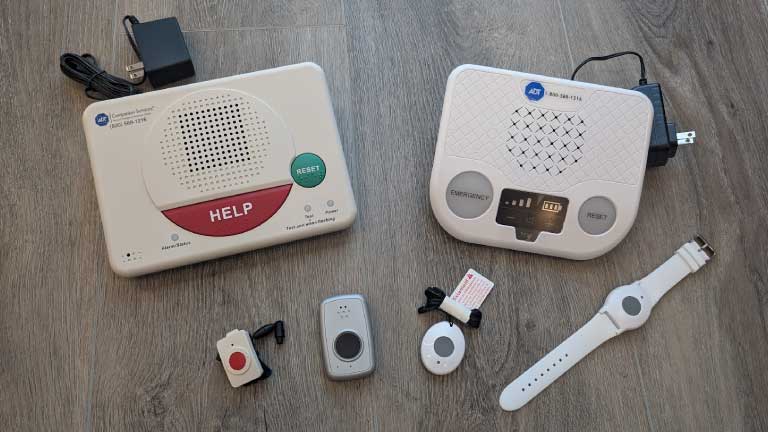
Among the top five systems we evaluated, ADT’s equipment was the least impressive. The in-home unit had a noticeable yellowish tint, and the mobile device felt cheaply made with its plasticky appearance. Despite this, ADT remains a trusted name when it comes to monitoring services. The monitoring center assesses the situation and dispatches emergency aid if necessary. The systems also come with additional features such as fall detection and GPS tracking for added security.
ADT offers a variety of subscription plans tailored to different needs and budgets, allowing users to choose a package that fits their preferences.
How We Chose the Best Companies
Our reviews are based on our own first-person experience involving personal hands-on testing of the product. In total, our ratings reflect over 350 hours of research and testing. Read below to learn about our hands-on testing.Hand's-On Testing
We acquired the top medical alert systems, set them up, and conducted thorough hands-on testing of both the equipment and its monitoring services.
Our assessment encompasses the complete customer experience, from the purchasing process with a sales representative to the evaluation of the company’s service quality after the purchase. Since most medical alert systems offer similar features, the quality of service—such as engaging with a helpful and friendly representative—often sets one company apart from another.
For each type of medical alert system (in-home, mobile, smartwatch), our review included the following criteria:
- Customer Service
- System Hardware
- Cost & Value
- Reputation
Customer Service
The 24/7 call center is the cornerstone of a medical alert system. It dictates the service quality from your chosen brand and is often the deciding factor in your overall satisfaction. We scrutinized each company’s service through every stage of ownership:
Purchase Process: We expected companies provide clear pricing, no hidden fees, no contracts, no aggressive sales tactics, and a quick, easy returns process. Our assessments began with a test call to the sales department, posing specific questions. We judged the responses on the rep’s knowledge, accuracy, and friendliness.
24/7 Monitoring: The heart of any medical alert service is its 24/7 emergency monitoring center, dedicated to immediate assistance. The top performers were based in the USA, CSAA 5-Diamond Certified, UL-Listed, and specifically trained to aid elderly users.
Returns & Refunds: This is where the best companies stand out. The returns process should be straightforward, fair, and fast. We returned each system post-testing and requested refunds, evaluating the simplicity of the process. Did the company make it easy or impose hurdles? How quickly did we get our money back?
System Hardware
We conducted thorough hands-on testing of the top medical alert systems, mimicking real-life scenarios. Our evaluation and testing included every aspect of the systems:
Unboxing & Setup: We set up each system, assessing the ease of the process. Was it user-friendly to get started? Did the system come fully charged? Did the company request crucial health information, such as your medical conditions and medications? This data allows operators to relay important details to first responders in an emergency.
Features: We examined all system features, including apps (for smartwatches) and online caregiver portals. Were the apps and portals intuitive and reliable? Did they offer practical utility?
Emergency Alerts: We triggered emergency alerts on each system, measuring response times and evaluating the call center’s service quality. For systems with fall detection, we simulated falls to test the alarm triggers.
Charging & Maintenance: For mobile and smartwatch medical alerts, battery life is crucial. We tested how long the battery held a charge. Was the system easy to charge? Did it provide low battery warnings?
Cost & Value
Price is a crucial factor when selecting a medical alert system, especially for American seniors on fixed incomes. However, pricing can be a mix of base costs, additional options, and monthly monitoring fees. Some companies also offer discounts for prepaying quarterly or annually.
We simplified this process by clearly outlining the costs and available options for each system. Most importantly, we examined the life cycle cost of each medical alert system. Some systems have a low initial price but high monthly fees. To provide a complete picture, we evaluated the 1-year and 2-year total ownership costs.
While price matters, we also considered the overall value. Systems with more features often come at a higher price, so we analyzed the cost-benefit ratio of these additional features.
Reputation
A medical alert company’s reputation is important, as they’re in the business of saving lives. Not only does MedicalAlertBuyersGuide.org provide original real reviews of each company from our personal testing experience, but we also scour the web for various review platforms, including the BBB, Google, and Amazon (if applicable) to back up our rankings.
Also, we made sure to review the company’s contract, trial period, and refund policy before adding them to our list as these are all testaments to a company’s reputation.
Lastly, we excluded any companies that required customers to commit to a lengthy contract. No company that locks you into a contract deserves to be considered the best in the industry.
Find the Best System for Your Needs
In-Home vs mobile? Landline vs cellular? Wearable buttons vs wall buttons? Automatic fall detection and GPS tracking? These are just some of the options you have when choosing the right medical alert system. This page is dedicated to choosing the best overall brand but this website also has guides if you wish to dig a little deeper. Check them out:
- Best Medical Alert Systems with Landlines
- Best Mobile Medical Alert Systems
- Best Medical Alert Smartwatches
- Best No Fee Medical Alert Systems
- Best All-In-One Medical Alert Systems (coming soon)
Budgeting for Your Medical Alert System
Ideally, we’d all choose a medical alert system that offers all the bells and whistles regardless of how much it costs. However, we live in a world where approximately 40% of older Americans rely solely on their Social Security to get by.
We understand there isn’t much wiggle room when families are on fixed incomes so the more realistic approach is to set a budget and decide what features are most important. We’ve done a cost analysis to help you with these decisions.
Monitoring Costs
By far the most important factor when it comes to signing up for a medical alert system is the professionally monitored 24/7 live agent and call center that’s on the other end of the line. This is the backbone of the service and the bulk of what you’re paying for.
Monitoring subscription fees range from $25 per month for in-home systems to $40-$50 per month for a mobile medical alert device. The reason why mobile subscription fees cost more is similar to why your smartphone is more expensive than a landline; companies have to charge extra for cellular and gps tracking capabilities.
Most families often want to add Automatic Fall Detection features to their service which is usually adds $10 per month to the service. Our top brands will be able to work within your budget to find a pricing solution that best fits your needs.
Equipment Costs
Most In-Home Medical Alert Systems don’t require an upfront a device fee. These “boxes” often referred to as “base consoles” or “main units” spend their lives atop a counter, night stand, or living room coffee table. These units are provided free of charge upon sign up and are required to be sent back to the provider upon service cancellation.
However the buttons that are worn with these systems will sometimes need to be replaced once every few years depending on usage. These wearable buttons have pretty long battery lives though and at around $20-$30 each, are fairly inexpensive to replace.
Alternatively, mobile devices will either require a hardware fee or an activation cost. These devices are purchased outright and don’t need to be returned when service is cancelled. Price ranges from $80-$200.
Again, think of it has purchasing a mobile phone. We’ll typically recommend buying an extended warranty plan from the provider since these devices are used throughout the day and go through a bit more wear and tear versus an in-home system.
Activation Costs
Some providers will charge an “activation fee” to make up for lost product revenue during sign up. In our reserach, we found that providers will either charge an equipment fee or an activation fee for new customers during sign up. We recommend choosing the equipment for the simple fact that you’re simply buying the device as opposed to paying a fee that doesn’t yield any material advantage.
Long Term Contracts
Avoid working with providers that require any type of long-term contract. Most medical alert providers give discounts and benefits when you pre-pay for a year but even then, you want to make sure that if you need to cancel early (due to death or the need to transfer to assisted living), you’re not on the hook for unused months.
Our top provider, Bay Alarm Medical, for example, prorates any unused months regardless of which payment plan the customer chooses.
So How Much Will I Be Spending?
From the surveys we’ve done, on average, customers that opt for an in-home system spend between $30-$40 per month. Customers that prefer a mobile cellular solution spend between $40-$50 per month plus and extra $80-$150 for whatever device they like.
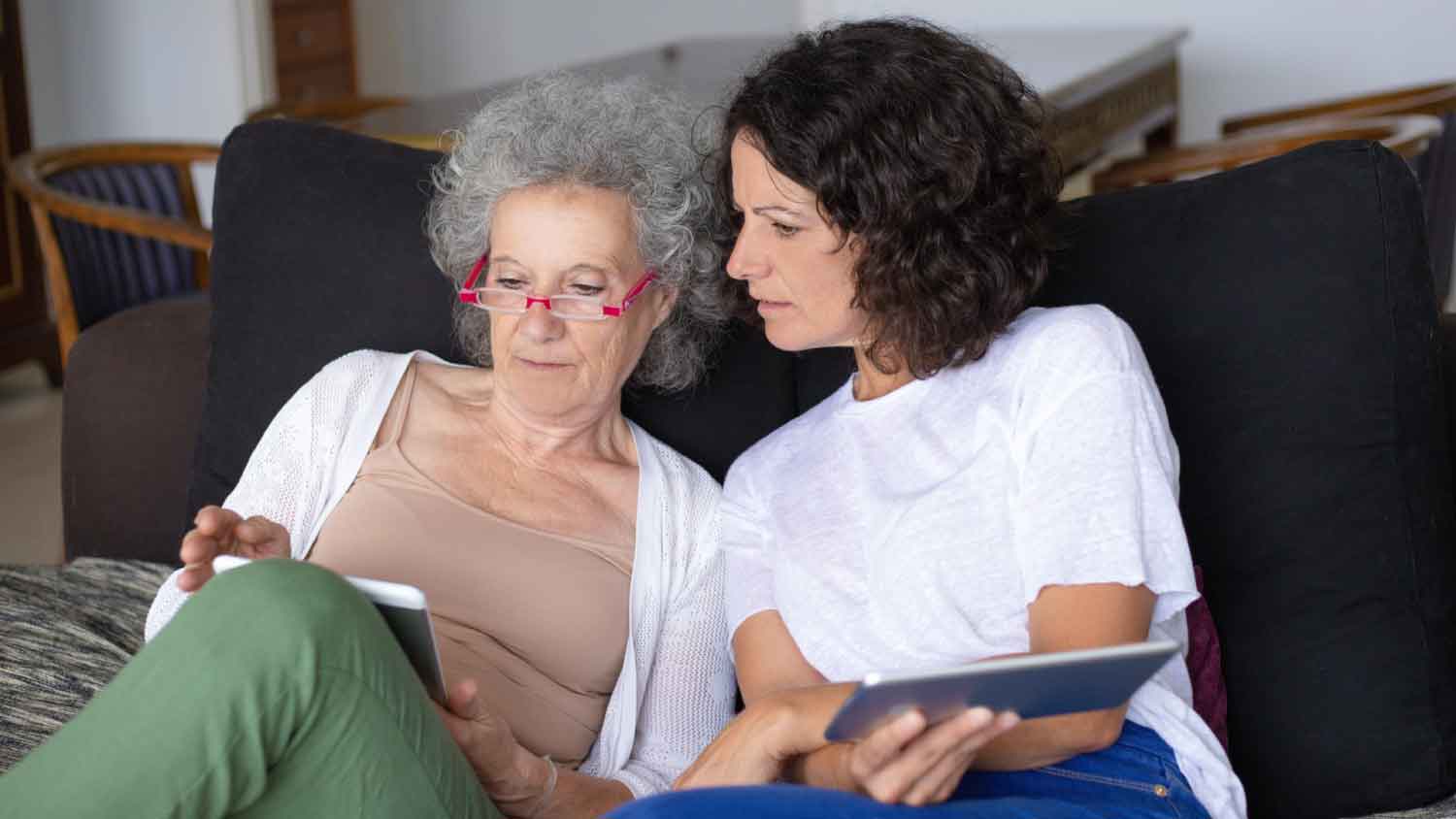
Here's How a Medical Alert System Works
A medical alert system is designed to provide quick and easy assistance to individuals who may need urgent medical attention. It works through a combination of wearable devices and a centralized monitoring system.
Here’s a simple breakdown of how it operates:
1. Press the Button on Your Device
A medical alert system includes a wearable device, such as a pendant or bracelet, with an emergency button. This button is easily accessible and can be pressed by the user in case of an emergency. It serves as a quick and convenient way to send a distress signal for help.
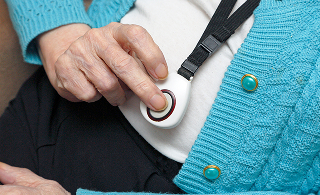
2. Professionally Trained 24/7 Agent Recieves Call
When the emergency button is pressed, a distress signal is transmitted to a monitoring center staffed by trained professionals who are available around the clock. They receive the signal and promptly assess the situation. The monitoring center serves as a centralized hub for emergency response, ensuring that help is just a call away at any time of the day or night.

3. Remain Calm and Wait for Help to Arrive
Once notified, appropriate medical professionals will arrive to assess the situation and take care of your needs. If they determine that you need to go to the hospital, they will transport you there fast. Rapid response, under an hour, is important because you’ll experience faster treatment and recovery time. Also, quickly addressing medical issues can reduce medical bills.
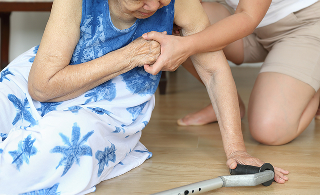
Here's How a Medical Alert System Works
A medical alert system is designed to provide quick and easy assistance to individuals who may need urgent medical attention. It works through a combination of wearable devices and a centralized monitoring system. Here’s a simple breakdown of how it operates:
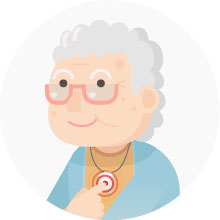
1. Press the Button on Your Device
A medical alert system includes a wearable device, such as a pendant or bracelet, with an emergency button. This button is easily accessible and can be pressed by the user in case of an emergency. It serves as a quick and convenient way to send a distress signal for help.
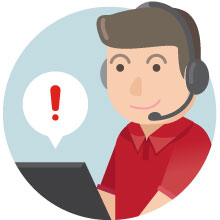
2. Professionally Trained 24/7 Agent Recieves Call
When the emergency button is pressed, a distress signal is transmitted to a monitoring center staffed by trained professionals who are available around the clock. They receive the signal and promptly assess the situation. The monitoring center serves as a centralized hub for emergency response, ensuring that help is just a call away at any time of the day or night.
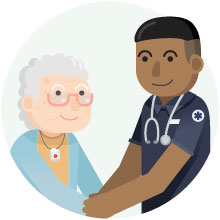
3. Remain Calm and Wait for Help to Arrive
Once notified, appropriate medical professionals will arrive to assess the situation and take care of your needs. If they determine that you need to go to the hospital, they will transport you there fast. Rapid response, under an hour, is important because you’ll experience faster treatment and recovery time. Also, quickly addressing medical issues can reduce medical bills.
Life-Saving Medical Alert Add-Ons. Widen Your Safety Net!
When you select a medical alert provider, you’ll also need to decide on any additional accessories. This can mean requesting additional buttons for safety. Lock boxes and Vials of Life provide additional protection and are recommended by most providers.
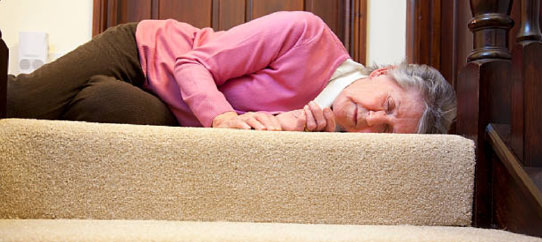
Automatic Fall Detection Buttons
Automatic fall detection has become an indispensable feature of medical alert systems, offering critical benefits that ensure safety and enhance quality of life. Here’s why this technology matters more than ever.
1. Quick Emergency Assistance
Automatic fall detection is designed to recognize when a fall occurs and immediately notify caregivers or emergency services. This swift action ensures help arrives as quickly as possible, minimizing delays in medical intervention. Prompt assistance can be life-saving, reducing the risk of serious complications and promoting faster recovery.
2. Greater Security and Peace of Mind
For older adults or individuals with mobility limitations, automatic fall detection provides an added layer of safety. Knowing that help will be summoned automatically—even if they cannot manually activate an alert—brings significant reassurance. This feature allows users to maintain their independence while offering comfort and confidence to their families and caregivers.
3. Better Health Outcomes
The ability to detect falls and respond quickly contributes to improved healthcare outcomes. Early intervention not only reduces the likelihood of extended hospital stays but also supports faster healing. Furthermore, the data collected by fall detection systems can help identify patterns or recurring risks, allowing caregivers and healthcare providers to implement preventative measures effectively.
In summary, automatic fall detection is a vital component of today’s medical alert systems. By ensuring rapid response, promoting a sense of security, and contributing to improved health outcomes, this feature plays a key role in protecting individuals and supporting their well-being.
![]()
Mobile GPS Device Tracking
When choosing a mobile medical alert system, most options come equipped with location tracking technology. Whether powered by GPS, Wi-Fi Positioning Systems (WiPS), or both, this feature enables caregivers, family members, and monitoring centers to quickly locate the user during emergencies—provided the device is being carried.
Enhancing Safety for Vulnerable Individuals
Location tracking is particularly valuable for those with conditions like Alzheimer’s or dementia, where the risk of wandering and disorientation is a concern. By offering real-time location information, these devices help prevent dangerous situations and ensure that loved ones can be found quickly if they stray from familiar surroundings.
Providing Critical Location Data
While location tracking does depend on the user carrying the device, it can still deliver crucial information about their last known position. This data is invaluable in locating someone who may be lost or in distress, especially in emergencies where every moment counts.
In short, mobile GPS device tracking adds a powerful layer of safety to medical alert systems. By combining real-time location monitoring with geo-fencing and emergency support, this technology helps protect individuals, offering peace of mind to both users and their loved ones.
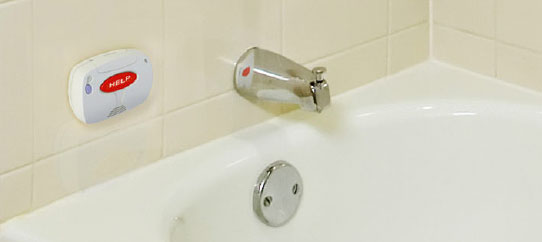
Wall Buttons are Useful
Wall buttons are a practical and popular addition to medical alert systems, especially for individuals who prefer not to wear a personal device or may occasionally forget to put one on. Many users choose to install multiple buttons—often 10 or more—for comprehensive home coverage.
Strategic Placement for Maximum Protection
These buttons are designed to be easily placed in key areas throughout the home, such as bathrooms, staircases, kitchens, and bedrooms. To ensure accessibility, it’s important to position them low enough to be reachable in case of a fall, enhancing safety and usability.
Affordable, Reliable, and Flexible
Wall buttons are not only budget-friendly but also easy to install, requiring no special tools or expertise. Simply stick them where they’re needed. Since they run on batteries rather than needing an outlet, they offer flexibility in placement. Most models feature batteries that last five years or longer, providing long-term reliability.
Boosting Home Safety
By installing several buttons around the home, you can significantly increase overall security and peace of mind. With their affordability, ease of use, and dependable performance, wall buttons are an excellent choice for anyone looking to enhance their medical alert system.
Look into the products at GetSafe Medical Alert Systems, particularly if you do not want to wear a medical alert button.
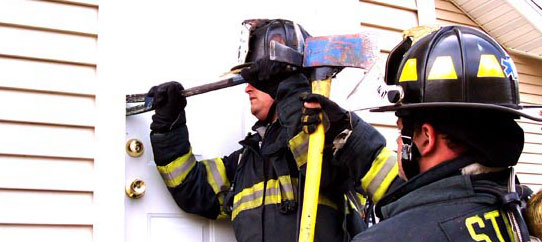
Importance of Lock Boxes
When an alert button is pressed, the top priority is getting help to the individual as quickly as possible. While family members or neighbors are often the first point of contact, critical emergencies may require professional responders, such as EMTs or firefighters, to intervene.
Ensuring Fast and Hassle-Free Access
In emergencies, every second counts. A lock box with a spare key allows emergency personnel to enter your home quickly and without causing damage. Without one, responders might need to force entry through a door or window, wasting valuable time and potentially resulting in costly repairs.
Convenience and Coordination with Monitoring Services
Many medical alert providers offer lock boxes as part of their service. The monitoring center keeps the combination code on file and can provide emergency personnel with the lockbox’s location and code when they arrive, ensuring smooth and rapid access.
Protect Your Home While Staying Safe
A lock box is a simple yet effective tool to enhance your medical alert system. It safeguards your property while enabling emergency responders to focus on what matters most—delivering the care you need without delay.
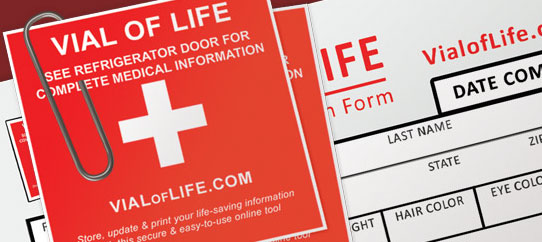
Vial of Life Helps You When You Can’t Speak
The Vial of Life accessory offers essential information to EMTs when you are unable to communicate. This packet, crucial in emergencies, contains all your medical details, aiding faster and more effective treatment if you’re taken to the hospital or emergency room.
Typically, it is attached to the refrigerator door. To set it up, you include information about your medications, allergies, and other health details. EMTs are trained to look for it, and the provider will also remind them to access it. You can also place these packets in other locations like your car, bedside table, or near a phone.
Most medical alert providers offer this service free of charge.
In-Home Systems vs. Mobile GPS-Enabled Devices
Depending on your mobility and lifestyle, you’ll want to know about the two types of medical alert systems available. It’s important to understand what they are before buying them. Here are a few pros and cons for each system.
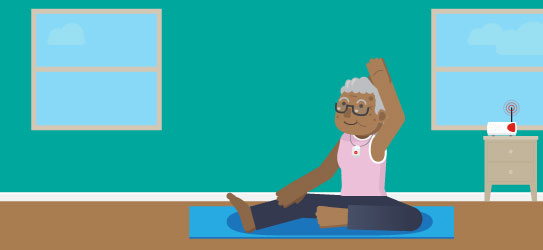
In-Home Medical Alert Systems
Pros of In-Home Medical Alert Systems:
- Dependable Home Coverage: In-home medical alert systems are specifically designed for residential use. With a base unit connected to a landline or cellular network and a wearable emergency button device, these systems provide reliable coverage within your home, ensuring peace of mind and quick access to assistance when needed.
- Extended Battery Life: These systems often feature base units that remain plugged into a power source, offering continuous operation without frequent battery recharges. This guarantees that the system is always operational, eliminating concerns about battery depletion.
- Simple Setup and Operation: In-home medical alert systems are easy to install and use. They usually come with clear, user-friendly instructions and can be set up quickly without professional help. Once installed, using the system is straightforward—just wear the device and press the emergency button if needed.
Cons of In-Home Medical Alert Systems:
- Restricted Range: The coverage of in-home medical alert systems is typically limited to your home and its immediate vicinity. If you go beyond this range, such as for a walk or to run errands, the system’s effectiveness may be reduced.
- No GPS Tracking: Unlike mobile medical alert systems, in-home systems usually lack GPS tracking. This means if you need emergency help and can’t communicate your location, the system might not provide accurate information to responders.
- Reliance on Home Infrastructure: These systems depend on a stable landline or cellular connection. Issues like power outages or network disruptions can temporarily disable the system, compromising its reliability.
In-home medical alert systems offer dependable coverage within your home, long battery life, and ease of installation and use. However, they are limited in range, lack GPS tracking, and depend on your home’s infrastructure for connectivity.
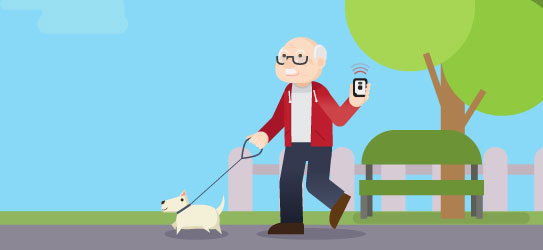
Mobile Medical Alert Systems Including Smartwatches
Pros of Mobile Medical Alert Systems:
- Portability and Flexibility: Mobile medical alert systems, such as portable battery-powered devices and smartwatches, offer protection wherever you go. These systems use cellular technology, allowing you to stay connected and request help even when you’re away from home. Whether traveling, visiting friends, or running errands, mobile systems provide on-the-go peace of mind.
- GPS Location Tracking: Many mobile medical alert systems include GPS technology, enabling emergency responders or monitoring centers to accurately locate you in an emergency. This is particularly helpful if you have a medical condition that could cause confusion or disorientation.
- Wide Coverage Range: Mobile systems operate on cellular networks, offering coverage across a wide range of areas. As long as cellular service is available, you can access the emergency response features of your mobile medical alert system, no matter where you are.
Cons of Mobile Medical Alert Systems:
- Battery Life: Mobile medical alert systems depend on battery power. Depending on the device and usage, frequent recharging may be necessary. Ensuring the device is adequately charged is essential for maintaining its functionality when needed.
- Dependence on Cellular Reception: While mobile systems provide broad coverage, they rely on cellular reception. If you’re in an area with weak or no cellular signal, the system’s effectiveness may be compromised. It’s crucial to verify the coverage quality in your area before selecting a mobile medical alert system.
- Risk of Device Loss or Damage: The portability of mobile medical alert devices means there is a risk of loss or damage. Misplacing or damaging the device could hinder your ability to access emergency assistance when necessary. Taking precautions to keep the device secure and protected is important.
Mobile medical alert systems offer portability, GPS tracking, and wide coverage, enabling you to stay connected and request help even when away from home. However, they have potential drawbacks, including reliance on battery life and cellular reception, as well as the risk of device loss or damage. Additionally, they are generally more expensive and require an upfront device purchase.
Choosing Your Medical Alert
So there you have it – Five of the best medical alert providers that encompass the nation’s most popular choices for to make sure your loved ones get the quickest and most reliable assistance if and when help is needed.
This buyer’s guide was designed to help you narrow your options and select the most suitable system based on your income and unique living situation. Through mystery shopping, we acquired the top medical alert systems, set them up, and conducted thorough hands-on testing of both the equipment and its monitoring services.
Our assessment encompasses the complete customer experience, from the purchasing process with a sales representative to the evaluation of the company’s service quality after the purchase. Since most medical alert systems offer similar features, the quality of service—such as engaging with a helpful and friendly representative—often sets one company apart from another.
Many popular brands didn’t quite make our Top 5 list. For more information, scroll down to our Frequently Asked Questions portion below.
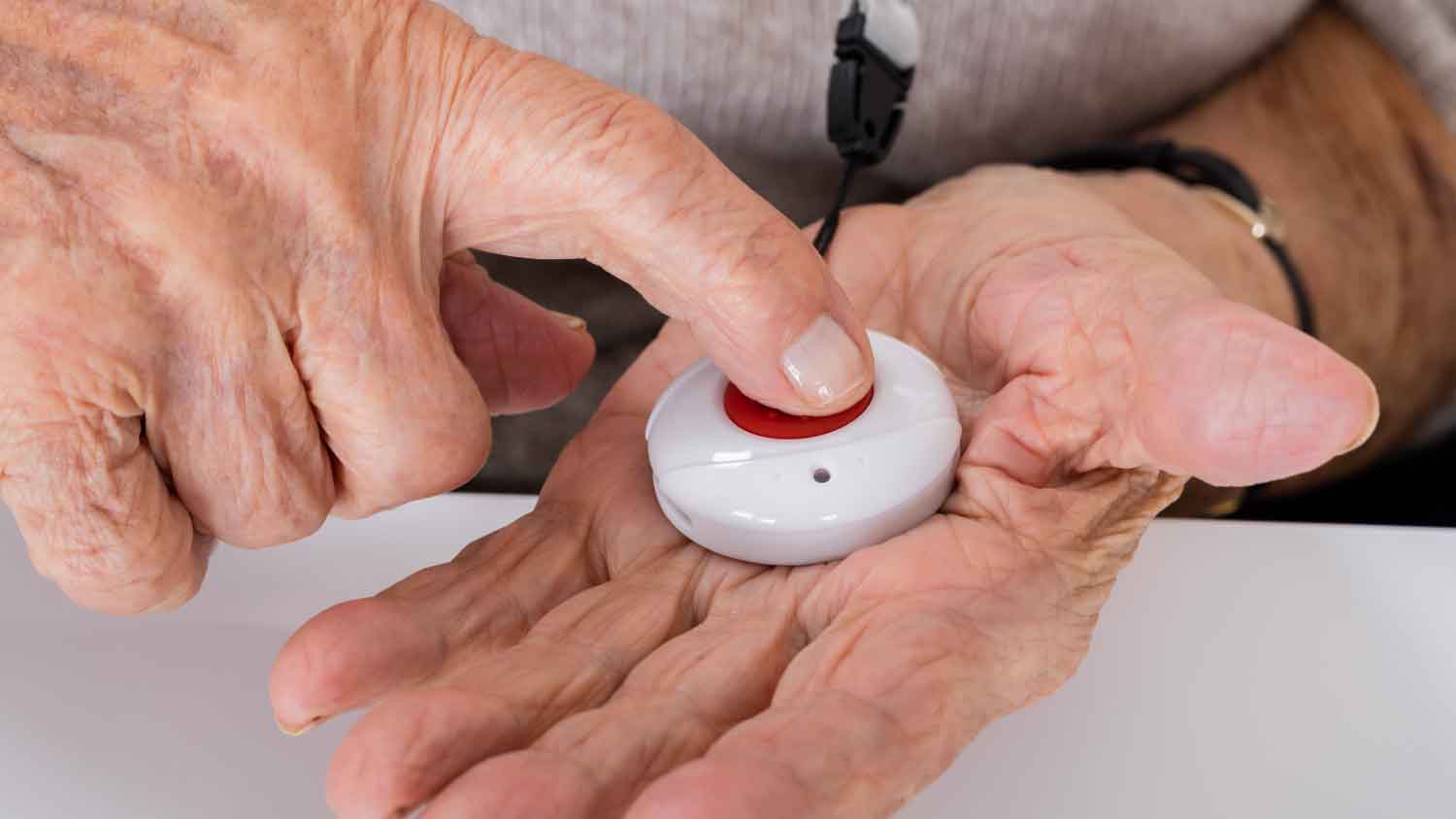
Frequently Asked Medical Alert Questions
While especially beneficial for seniors living alone or individuals with medical conditions, medical alert systems are suitable for anyone desiring quick access to help during emergencies.
Unfortunately, these types of systems are not covered by either Part A or Part B Medicare plans. However, some private insurance companies and Medicare Advantage plans do provide coverage or discounts for medical alert systems. This means that you must check the details of your coverage because there is no industry standard. To get more information, see Does Medicare Cover Medical Alert Systems.
While AARP as an organization strongly recommends that seniors use medical alert systems, it does not specifically endorse any one particular product. The organization does recognize that these systems can be lifesaving for seniors. And some PERS providers even offer discounts for AARP members. See Medical Alert System Discounts for AARP members.
The fees for Life Alert service can be between $49.95 and $89.95 per month. These costly fees are similar to other providers at the higher end of service. Yet at the lower end, there are providers with services for much less; some offer medical alert services for around $20/month. Monthly costs are not the only consideration when selecting a provider. You also need to look at the cost of the hardware and the length of the contract. More information can be found here at Life Alert Medical Alert System.
Yes, many systems offer mobile options with GPS tracking, allowing users to access help both at home and on the go. These mobile systems can pinpoint the user’s location during an emergency.
If the help button is pressed unintentionally, simply inform the operator when they respond that it was a false alarm. Accidental activations are common, and operators are trained to handle them.
Many medical alert buttons are designed to be waterproof, allowing users to wear them in the shower or bath—common sites for falls. However, it’s essential to verify the waterproof capabilities of specific devices with the provider.
Not necessarily. While some systems operate via landlines, many modern medical alert systems use cellular networks, eliminating the need for a landline. It’s important to confirm that the cellular service used by the system has adequate coverage in your area.
Battery life varies by device. Wearable buttons often have long-lasting batteries (up to several years) and may require periodic replacement. Mobile systems typically need recharging every 1–3 days.
Most base units have backup batteries that allow the system to function for several hours during a power outage. Mobile units, which are battery-operated, are unaffected as long as their battery is charged.
Monitored systems connect users to a 24/7 call center staffed by trained operators who can dispatch emergency services or contact family members. Unmonitored systems typically alert a list of pre-programmed contacts directly when the help button is pressed.
We are strongly in favor of monitored medical alert systems. Professional monitoring means that trained operator with your medical history on-file who can communicate with emergency responders when you may not be able to speak.
To learn more, read our reviews and assessments of top “no fee” medical alert systems.
Yes, Walmart does offer these products. There you can find both systems that are monitored or unmonitored. However, it’s a good suggestion to shop around for the best products for you at the best prices. This includes shopping and gathering information online. For more help, consider this article: Buyers Guide to Walmart Medical Alert Systems.
This is an option that many medical alert providers offer. And it is one that most subscribers need. Every 19 minutes, someone dies as a result of a fall. Falls can be serious—and costly. In fact, the expected healthcare cost related to falls in 2020 was $67 billion.
Picking the right one for you depends on the options you are looking for. Understand the reliability of the system and the likelihood of false alarms. Also consider the type of response that happens when there is a fall or an emergency arises. This means determining who should be contacted when there is an alert, and what the response level will be if a fall is detected. For more information on selecting fall detection systems, look here Compare the Best Medical Alerts with Fall Detection.
You’ll find Medical Guardian listed in many other comparison sites as a top rated medical alert provider. Simply put, Medical Guardian charges a very high premium for servies that aren’t any better or worse than our top five providers. In fact, many of Medical Guardian’s products can be found from other brands for far less. Both the equipment and monitoring center are identical so paying more won’t get you anything extra.
Some providers allow multiple users to connect to a single system by adding extra wearable devices. However, this may involve additional fees. It’s best to confirm this option with the provider.
Most medical alert companies offer their services without long-term contracts, allowing cancellation at any time. Among the leading companies, only Life Alert requires you to sign a lock-in contract. That’s one of the main reasons we don’t recommend Life Alert.
It’s crucial to review the terms and inquire about any potential setup, activation, or cancellation fees before committing.
Sources
- https://www.ncbi.nlm.nih.gov/pmc/articles/PMC4499195/
- https://www.visn8.va.gov/VISN8/PatientSafetyCenter/research.asp
- https://visual.ly/community/Infographics/health/risks-costs-senior-fall-injuries
- https://www.cdc.gov/falls/data/falls-by-state.html
- https://tma.us/programs/fivediamond/
- https://www.cdc.gov/falls/facts.html
- https://www.ncbi.nlm.nih.gov/pmc/articles/PMC5699193/
- https://www.performancehealth.com/articles/the-impact-of-falls-on-the-elderly-infographic
Table of Contents:
- How We Tested: Hands-On Testing + In-Depth Reviews
- The Best In-Home Medical Alert Landline Systems of 2025
- How We Chose the Best Companies
- Find the Best System for Your Needs
- Budgeting for Your Medical Alert System
- Here's How a Medical Alert System Works
- Here's How a Medical Alert System Works
- Life-Saving Medical Alert Add-Ons. Widen Your Safety Net!
- In-Home Systems vs. Mobile GPS-Enabled Devices
- Choosing Your Medical Alert
- Frequently Asked Medical Alert Questions
- Sources

